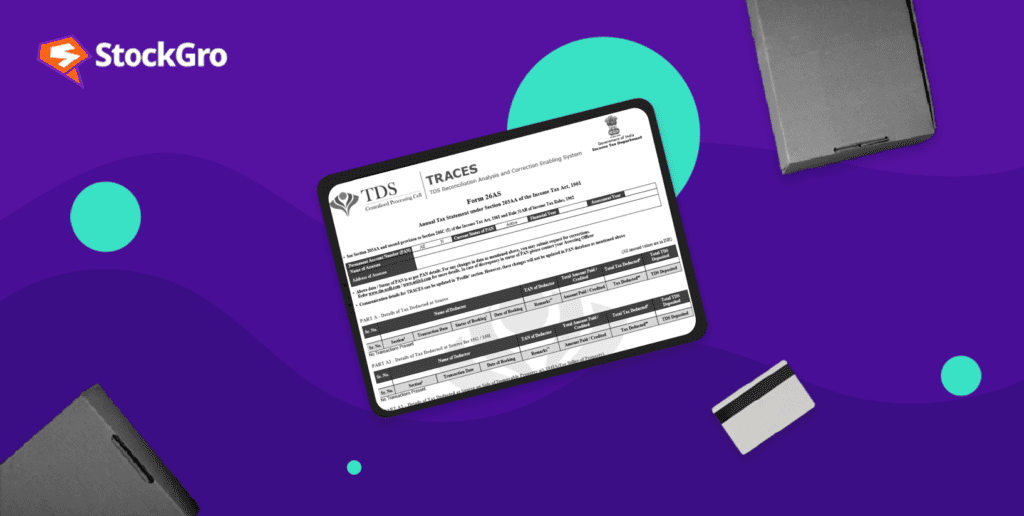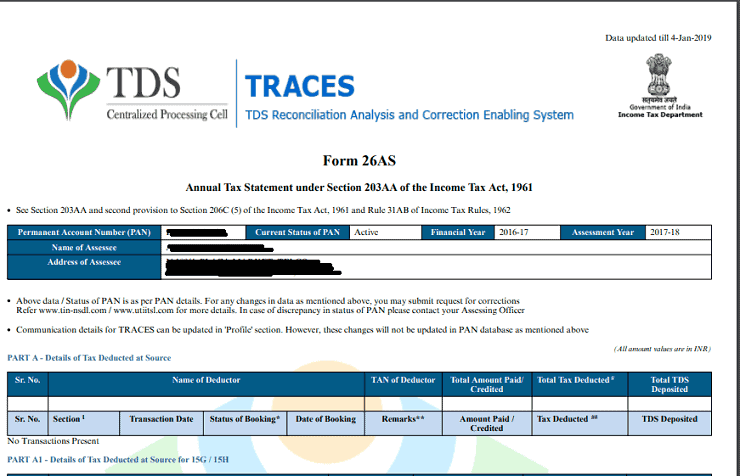
In the complicated maze that is the Indian taxation system, one tax form stands out from the others – that’s the Form 26AS. This form plays a very important role in the country’s taxation system, whether that’s for individuals or companies.
In this article, we’re going to explore what this form is, why it matters, and why knowing about it can make you a more responsible taxpayer.
What’s Form 26AS?
Form 26AS is the Tax Credit Statement form which provides the details for any taxes that were deducted corresponding to your income in the form of TDS / TCS. These deductions are made from various sources of your income. For instance, all salaried professionals in India (who earn above a certain threshold) have to pay a haircut on their salaries to their employers.
That’s when Form 26AS comes in handy. When your employers deduct a 10% TDS on your salary, for instance, they use your PAN number to record the deduction. When you file your Income Tax Return (ITR), Form 26AS contains the information of all the TDS you’ve paid over time.

On your end, you should make sure that you secure a TDS certificate from your employer as proof of deduction.
Here’s the information that’s typically displayed in the 26AS:
- Details corresponding to specific financial transactions
- Taxes deducted and collected at source
- Tax demands and refunds
- Your bank account details
- Income tax payments like advance taxes and self-assessment taxes paid by you (the taxpayer)
- Pending and completed income tax proceedings
You may also like: Unlocking tax benefits: Your guide to section 80GG deductions
Download and access the 26AS
Here are the steps you need to follow to download the 26AS:
- Log on to the e-Filing Portal of the Income Tax Department here. Link
- Go to My Account, and click on View Form 26AS.
- Read the disclaimer, click Confirm, and you’ll be redirected to a new page.
- On the new TDS-CPC Portal, Agree to the terms and conditions and click Proceed.
- Select your assessment year, and click View / Download.
TDS not reflecting in Form 26AS?
Sometimes, your TDS can be deducted from your bank account but might fail to reflect on Form 26AS. Some reasons are:
- Tax collected by the deductor was not deposited in your government tax account.
- TDS return has not yet been filed by your deductor.
- The statement of tax deduction has not been filed on the portal by the deductor yet.
- Statement of tax deduction was posted or added to a PAN that doesn’t belong to you.
Here’s what you can do in these situations:
- Double-check the PAN you provided to your deductor.
- Ensure that your deductor has deposited the TDS to your government account. You might have to follow up with them yourself. Alternatively, you could also use this link to know whether the collector has filed quarterly TDS/TCS statements on your PAN.
Also Read: Overview of section 80C deduction and its sub-sections in income tax
Filling the Form 26AS
Now that you’ve downloaded the form, here are some things you need to keep in mind before you file it:
- Ensure that the year of assessment is correct.
- Determine where your tax residence is. If you’ve lived outside India for more than 180 days in a financial year, then you qualify as a Non-Resident Indian. The rules for taxation change for you. We encourage you to consult a tax professional to proceed. If not, you can proceed as is.
- Make sure you’re working with the right ITR form. There are different forms for businesses and individuals, for instance.
- Form 26AS is not enough to file your ITR. You’d also need documents like Form 16, rental agreements or receipts, bank statements, etc.
- Report your foreign assets, if any.
What are the benefits of Form 26AS?
Here’s how you benefit by checking in with your 26AS:
- This one form contains almost everything you need to know about your TDS / TCS deductions. If you’ve ever been subject to an advance tax that’s settled in the next ITR cycle, you’ll find it here.
- It helps you calculate your effective income and claim your tax credits in your tax account / refunds directly in your bank account.
- View details of all your Securities Financing Transactions (SFT).
Also Read: Understanding form 15G: Avoiding tax hassles
Conclusion
Form 26AS, in conclusion, is one of the most important documents that you need when filing your income tax return. It contains all the information you need about your tax deductions or collections that happen at the source – with your employer or otherwise.
While Form 26AS is easy to understand, special circumstances with your tax residence or foreign assets can make tax filing complicated. We encourage you to do your own research and consult with a professional to file your taxes correctly.

